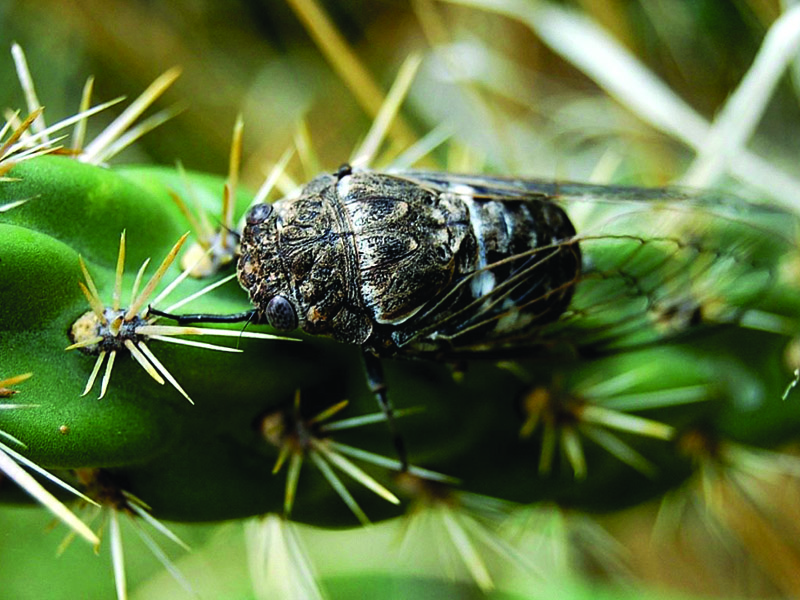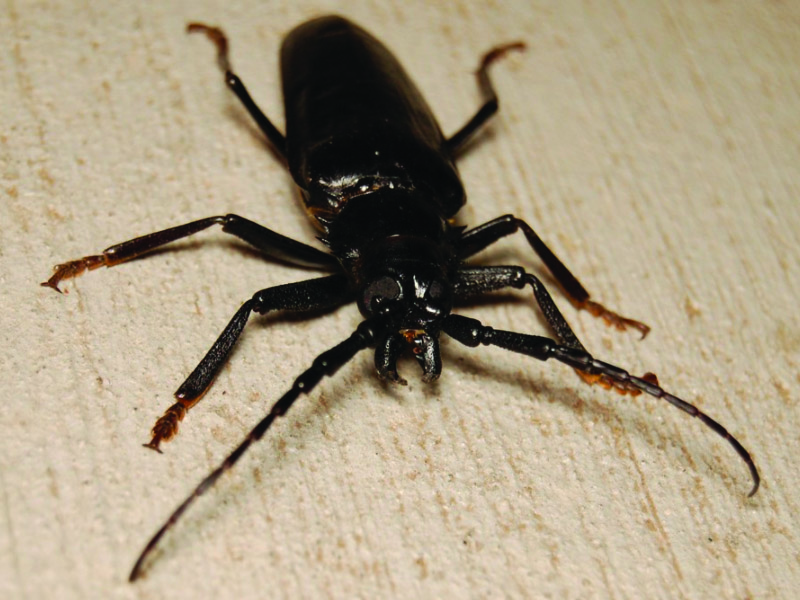Trees bring surprises in the Sonoran Desert monsoon
The cloudy days, the high humidity and afternoon thunderstorms. For many Arizonans, these are the signs of monsoon season. If you look to the trees, you will see the fascinating insects that signal it is monsoon season.
Palo Verde Beetle
It is hard to miss a palo verde beetle (Derobrachus germinates). These large beetle adults crawl across the ground or ungracefully fly, hanging out under trees and streetlights, looking for a mate. They might look scary but are pretty harmless. Instead of being scared, use the opportunity to see some cool beetle anatomy up close. Did you realize beetles have four wings? Two hard wings are on the outside and two lighter wings are tucked underneath for flying. How many legs do you see? These insects (like all insects) have 6 legs. Palo verde beetles have very prominent tarsi at the ends of their feet, that they use to grab onto trees. Do you see the very long, segmented antennae? They are part of the longhorn beetle family, defined by long antennae, sometimes longer than their body.
The adults that you see only live for about a month. They come out during the monsoon season to find a mate and lay eggs. One the female finds a mate, she lays her eggs underground near the base of a tree. Her larvae (grubs) will live 3-4 years underground, chewing on the roots of the tree, and bore into the base. They target less healthy trees for their development, before the next generation of adults make an appearance during our monsoon.
Black Witch moth
Most have had the experience of walking outside in the morning to see moths lying flat against the wall, under the porch light, waiting for night to come again. Maybe you’re used to seeing tiny moths. Now, imagine walking outside to see a darkly colored moth, with a wingspan of more than 6 inches! This is the black witch moth (Ascalapha odorata). Reportedly the largest moth in the continental US, these beautiful moths come to visit us during the summer, monsoon season.
Just like the palo verde beetles, they are hosted by the trees. The larvae (caterpillars) of the black witch moth feed on the leaves of legumes, like our mesquite trees. It would be hard to find the larvae, but keep an eye out for the adults. These moths also carry a folklore in some cultures. Like monarch butterflies, that can be a sign of messages from recently departed loved ones. Or they might be the harbinger of bad luck under certain circumstances. Supposedly, if you find one perched above your door, you will win the lottery!
Cicadas
BBBUUUUZZZZZZZZZ! That characteristic sound of summer is male cicadas singing in the trees. Right about now, the immature form of the cicadas are making their way out of the ground around the trees. You may notice the characteristic exuviae (shed skins) hanging on the trunk of a tree. But, you will almost certainly hear the sound. Cicada males repeatedly click together a hard membrane on the underside of their bodies to make the buzzing to attract mates. They are quite competitive and may call even louder if other males are nearby.
There are many species that live in Arizona, but they do not have the 13 or 17 year cycle common to cicadas on the east coast. Cicadas spend most of their life underground, as juveniles, feeding on tree roots, but do not cause much damage. Can you hear one? See if you can spot it in the tree!
Take these times to enjoy the sights and sounds of the monsoon, including the insects that live here. Just don’t reach for the bug spray – they are only here for a short while.



